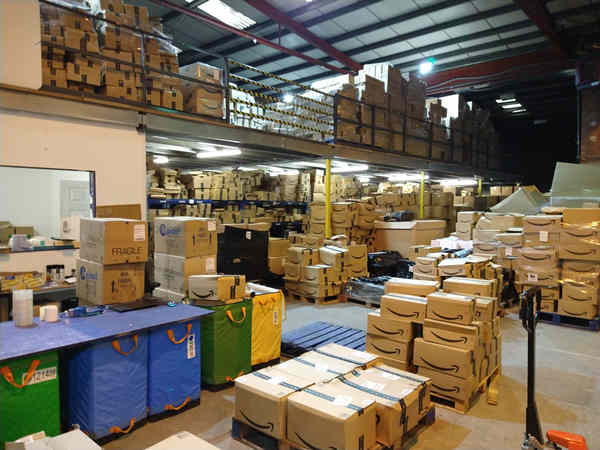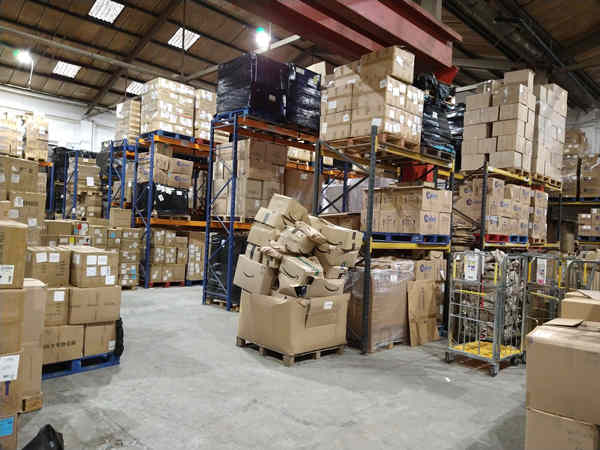How are overseas warehouses charged?
How are overseas warehouses charged? What services do overseas warehouses provide? For overseas warehouses, it has always been a very important presence in the cross-border e-commerce industry. Many people choose overseas warehouses for several reasons , such as domestic delivery, fast delivery time, and cheap prices, these are some reasons for choosing overseas warehouses, but there are still some friends who still don’t know much about what services overseas warehouses can provide and how to charge them. Let me introduce them to you below.How are overseas warehouses charged?
Charge according to the quantity of goods
Charging according to the quantity of goods is the main form of charging for overseas warehouses. When the goods are stored in overseas warehouses during transportation, charges will be charged according to the quantity of the goods. The greater the quantity, the more expensive the charges will be. Therefore, merchants should store goods according to the actual business conditions.
Charged according to the storage time of the goods
In addition to charging according to the quantity of goods, overseas warehouses will also be charged according to the storage time of the customer's goods. This also benefits the utilization rate of the warehouse. Charging according to the time the goods are stored can motivate merchants to circulate goods as soon as possible.

The storage of overseas warehouses is to help merchants solve the problem of goods storage. Reasonable planning of the time and quantity of goods storage is something that merchants need to consider. Through a reasonable plan, the cost can be controlled within a reasonable range and the cost of the merchant can be reduced.
One-stop service
The overseas warehouse service provided by the current mainstream platforms is to provide sellers with one-stop services such as warehousing, sorting, packaging, and delivery. In addition, there are also personalized services such as drop shipping, warehousing, transshipment, and return to China, and the coverage is also very wide. Extensive, combined with the local logistics characteristics of overseas warehouses, it can ensure that the goods are delivered to the final buyer safely, accurately, timely and at low cost.
What services do overseas warehouses provide?
provide transportation
Overseas warehouses can provide shipping services for cross-border e-commerce sellers. Express delivery in the destination country will be much cheaper than domestic express delivery. However, with the continuous development of cross-border e-commerce in recent years, if the original one-piece delivery is mainly used. The business model still exists, and overseas warehouses will face the problem of rising warehouse operating costs and labor costs. At the same time, warehousing automation, FBA competition, and Amazon's last-mile layout will also bring greater impact to the development of enterprises.
FBA returns and exchanges, etc.
Overseas warehouses with a single function are easily replaced, coupled with the continuous increase in operating costs and the continuous dilution of profit margins, which directly affects the development of enterprises. It is necessary to evolve from the original one-piece drop shipping idea to a multi-functional logistics transit center, including providing personalized services such as return and exchange, return and exchange of labels, drop shipping, warehousing, transshipment, and return to China.

When an overseas warehouse is approved by the customs as a bonded warehouse, its functions and uses are more extensive, which can simplify the customs clearance process and related procedures. At the same time, entrepot trade can be carried out in the bonded warehouse, and the overseas warehouse is located in a third country to connect the seller and buyer countries, which can effectively avoid trade sanctions. In bonded overseas warehouses, it can also provide corresponding value-added services such as simple processing, which can effectively enrich warehouse functions and improve competitiveness.
Provide FBA transfer function
In order to reduce the risk of delay in some links, the goods are first shipped to the overseas warehouse in the destination country by air or sea, and then, if the storage capacity allows, the overseas warehouse is required to be labeled with FBA and sent to FBA by local express.
Able to reduce delivery costs
In order to better integrate the upstream supplier resources of domestic warehouses and the downstream customer resources of foreign warehouses, and meet the needs of logistics with high timeliness, the domestic warehouses are used as the end point of common distribution, and the overseas warehouses are used as the starting point to realize the effective integration of transportation resources and achieve transportation. economies of scale and lower distribution costs.
Choose a company that can effectively connect with
The effective docking process is also an important factor in the selection of overseas warehouses. Due to the importance of information connection between overseas warehouses, customers and logistics companies, there are often many misunderstandings in terms of information asymmetry, information delay and communication barriers. Therefore, for the selected overseas warehouse, it is very important to establish a mature overseas warehouse management system.
How are overseas warehouses charged? What services do overseas warehouses provide? Through the above detailed introduction, I believe everyone can understand that some overseas warehouse allocation management systems can meet the operation management needs of different operation modes of overseas warehouse logistics, and can be grasped in real time. Dynamic inventory, timely response to material replenishment, etc. Whether choosing an overseas warehouse or the logistics provider itself, the integrated operation of the first journey is very important, which can provide better services for users.
Remarks: The above content is only an internal opinion and is for reference only.





